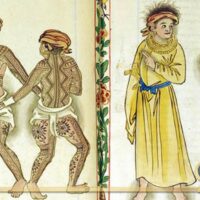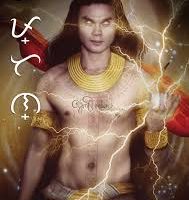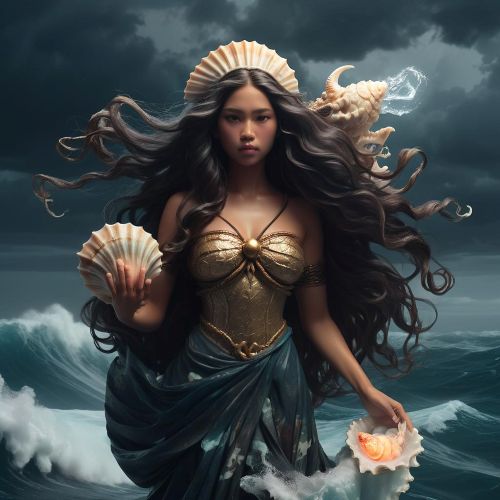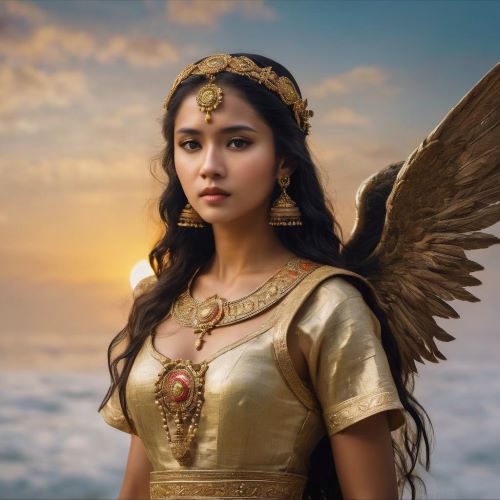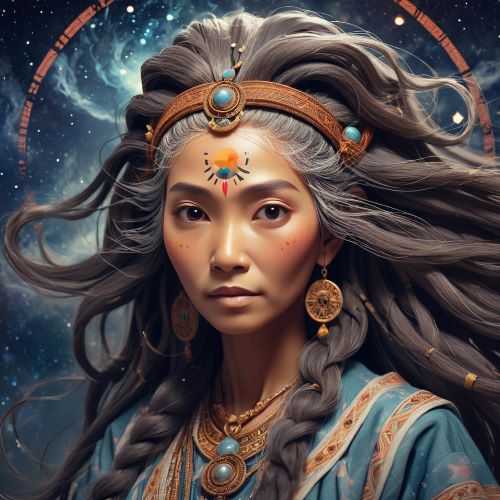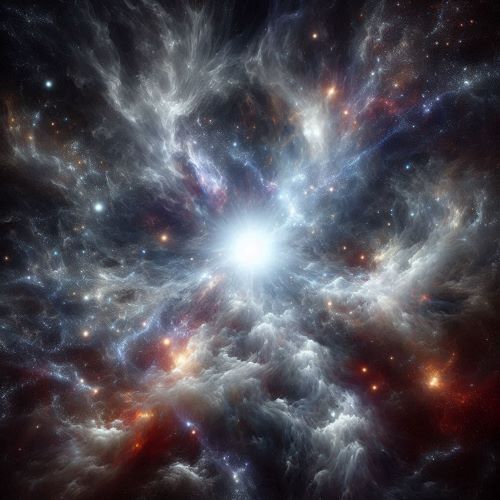Kaptan : The Creator God
Listen
At a glance
| Description | |
|---|---|
| Origin | Philippine Mythology |
| Classification | Gods |
| Family Members | Lihangin (Son) |
| Region | Philippines |
| Associated With | Creation, Lightning |
Kaptan
Introduction
Kaptan, the supreme deity of the Visayan pantheon in Philippine mythology, is revered as the ruler of the sky and the celestial domain. Often compared to Bathala of the Tagalog belief system, Kaptan occupies a central role in the spiritual life of the early Visayan people. He is the cosmic authority in myths that explore creation, divine relationships, and moral order. Rooted in pre-colonial tradition, his stories illustrate the Visayan perspective on the origins of the universe, the interconnectedness of nature, and the ancestral wisdom passed through generations. Kaptan’s mythology not only shapes the cultural consciousness of the Visayas but also reflects the region’s profound respect for divine forces and natural phenomena.
Physical Traits
Kaptan is typically portrayed as a commanding, dignified figure, embodying the stature and demeanor of a tribal chieftain. His presence signifies dominance over the heavens, and he radiates a divine energy that asserts his supremacy in the pantheon. Though depictions vary across regions, he is commonly imagined as an authoritative middle-aged man who carries the weight of divine judgment. Kaptan’s character is marked by impulsiveness and wrath, especially when his cosmic order is disrupted or when mortals fail to respect the divine. He is known to wield lightning as a weapon, channeling the raw energy of storms to exact justice and reassert his dominance over both gods and mortals.
Family
Kaptan’s role as a patriarch in Visayan mythology is crucial to the region’s creation narrative. He is the father of Lihangin, the god of the wind, and through his divine lineage, the grandfather of four celestial beings: Likalibutan (earth), Liadlaw (sun), Libulan (moon), and Lisuga (stars). These descendants are not just symbolic of natural elements but represent cosmic balance and the consequences of divine disobedience. Kaptan’s interactions with his grandchildren, particularly their failed rebellion and subsequent punishment, reveal the god’s complex nature—stern yet capable of sorrow. His partnership with Magwayen, the sea goddess, also signifies the unity of sky and sea, a foundational theme in many Philippine creation stories. Their descendants’ fates are intertwined with the formation of the natural world, anchoring Kaptan’s legacy in both divine governance and familial grief.
Other names
Kaptan’s identity varies subtly across different Visayan communities. In some traditions, he is referred to as Makaptan, a name that emphasizes his might and immortality. The Boxer Codex, a 16th-century manuscript documenting Filipino beliefs, refers to a similar deity under the name Malaon, suggesting the deep roots of Kaptan’s myth in the archipelago’s oral traditions. On the island of Negros, some regard Kan-Laon as either a supreme being or an aspect of Kaptan, showing how mythology evolves to reflect local spiritual views. These variations underscore the fluidity of pre-colonial belief systems, where deities often merged or shifted roles across geographic and cultural lines, yet always retained core elements of authority and cosmic power.
Powers and Abilities
Kaptan’s divine powers are vast and central to the functioning of the cosmos. As the sky god, he controls lightning and tempests, instruments through which he dispenses punishment and maintains harmony. His authority includes the ability to create life, evident in his planting of the sacred bamboo that birthed the first humans, Sikalak and Sikabay. His powers extend to celestial transformation—when his grandchildren defied him, he converted them into parts of the natural universe, turning Lisuga into stars and breaking Likalibutan’s body into the earth’s landscape. Kaptan’s control over weather, disease, and time further illustrates his dominion over all aspects of existence. His immortality ensures that his role as overseer of cosmic justice is eternal. He is not merely a god of punishment but one who restores balance, as shown when he revived Pandaguan after striking him down—a gesture that reveals a deeper moral complexity within his divine character.
Modern Day Influence
Kaptan’s mythological presence continues to resonate in contemporary Visayan culture and broader Filipino identity. His stories are preserved in oral traditions and documented in folklore studies, where they serve as windows into the indigenous worldview before colonial imposition. Modern platforms such as digital art websites, mythology blogs, and educational YouTube channels have played a vital role in reviving interest in deities like Kaptan. Artists reinterpret his form, often blending traditional imagery with contemporary themes to make him more accessible to younger audiences.
Academic institutions have also incorporated Kaptan into their curricula, especially in cultural studies and literature courses that explore indigenous belief systems. His mythological symbolism—representing justice, authority, and cosmic balance—has found relevance in today’s discussions on decolonization, cultural reclamation, and environmental harmony. In the realm of creative arts, Kaptan appears in comics, speculative fiction, and even AI-generated narratives, where he is reimagined as a guardian of nature or a cosmic judge. These adaptations reflect a growing movement to reconnect with ancestral roots and celebrate the richness of Philippine mythology in a modern context.
Related Images
Source
Clark, J. (2016). Visayan Story of Creation. The Aswang Project. https://www.aswangproject.com/visayan-story-of-creation/
Old World Gods. (n.d.). Discover the Enigmatic Power of Kaptan Visayan God. https://oldworldgods.com/filipino/kaptan-visayan-god/
Caballes, L. (2024). The Bisayan Deities: Who Were the Gods & Goddesses?. The Pinay Writer. https://thepinaywriter.com/the-bisayan-deities-who-were-the-gods-goddesses/
FilipiKnow. (n.d.). Philippine Mythology Gods and Goddesses: An Ultimate Guide. https://filipiknow.net/philippine-mythology-gods-and-goddesses/
Vizayan Myths. (2013). Kaptan/Captan/Makaptan. https://vizayanmyths.blogspot.com/2013/05/kaptancaptanmakaptan.html
Frequently Asked Questions
What is lorem Ipsum?
I am text block. Click edit button to change this text. Lorem ipsum dolor sit amet, consectetur adipiscing elit. Ut elit tellus, luctus nec ullamcorper mattis, pulvinar dapibus leo.
What is lorem Ipsum?
I am text block. Click edit button to change this text. Lorem ipsum dolor sit amet, consectetur adipiscing elit. Ut elit tellus, luctus nec ullamcorper mattis, pulvinar dapibus leo.
What is lorem Ipsum?
I am text block. Click edit button to change this text. Lorem ipsum dolor sit amet, consectetur adipiscing elit. Ut elit tellus, luctus nec ullamcorper mattis, pulvinar dapibus leo.
What is lorem Ipsum?
I am text block. Click edit button to change this text. Lorem ipsum dolor sit amet, consectetur adipiscing elit. Ut elit tellus, luctus nec ullamcorper mattis, pulvinar dapibus leo.
What is lorem Ipsum?
I am text block. Click edit button to change this text. Lorem ipsum dolor sit amet, consectetur adipiscing elit. Ut elit tellus, luctus nec ullamcorper mattis, pulvinar dapibus leo.



